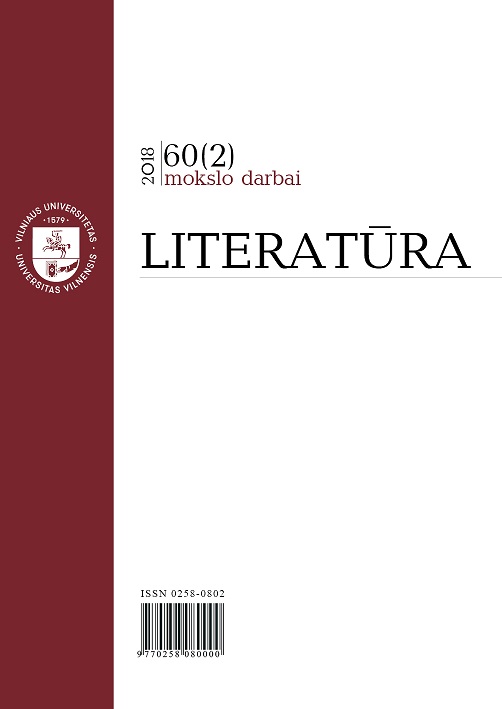Ухрония как структурообразующий прием в романе Евгения Водолазкина «Авиатор»
Uchronia as a Structure Forming Technique in Eugene Vodolazkin’s Novel Aviator
Author(s): Natalia KovtunSubject(s): Novel, Russian Literature, Existentialism, Theory of Literature
Published by: Vilniaus Universiteto Leidykla
Keywords: Vodolazkin; novel “Aviator”; uchronia; utopia; diary; island;
Summary/Abstract: This article is devoted to an analysis of the iconic novel Aviator (2016), written by Eugene Vodolazkin. Uchronia is indicated as a text-forming principle for organizing the text, with the works of A. Ulybyshev, F. Dostoevsky, I. Goncharov and N. Chernyshevsky, up to the writings of A. Bogdanov and A. Chayanov, acting as its examples in Russia. Our hypothesis is that the key idea of narration is the creation of a character’s own diary as an island, where the elusive signs of time and the “trivialities of existence,” through which the ineffable unfolds, are preserved. The island-text becomes one of the ways for the story to survive. From this point of view, we analyze the structure of the novel as a text within a text, the system of characters, the key motifs of uchronia, including the dream, the journey, the exotic island, the garden, the initiation, the character’s love for the “aboriginal woman,” and the classical versions of the characters: the traveler and the interpreters accompanying him. The novel Aviator, built on the basis of uchronia, unfolds into a narration about the search for existential meanings that are found in the existential experiences of the characters. The deciphering code of history, it seems, is literature, the plots found within which unfold in real life, turn into myths and return to literature, an example of which is the Aviator’s diary.
Journal: Literatūra
- Issue Year: 60/2018
- Issue No: 2
- Page Range: 76-91
- Page Count: 16
- Language: Russian

